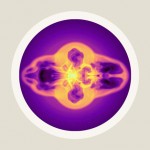Dictionary
abundances of elements
What portion of atomic matter in the universe is made up of hydrogen atoms? What fraction takes the form of helium, and how abundant are the other chemical elements? Questions like these are interesting in the context of relativity theory because the relativistic big bang models predict how many nuclei of light elements (mainly deuterium, helium, lithium) should have formed in the early universe during the phase known as Big Bang Nucleosynthesis. A brief account of this phase can be found in the spotlight text Big Bang Nucleosynthesis, while Equilibrium and change provides more information about the physical processes involved.
Measuring the abundances for these elements and subtracting the estimate for how many such nuclei formed inside stars (stellar nucleosynthesis) makes for an important test of this prediction and thus of the big bang models themselves. More information is provided by the spotlight text Elements of the past.










